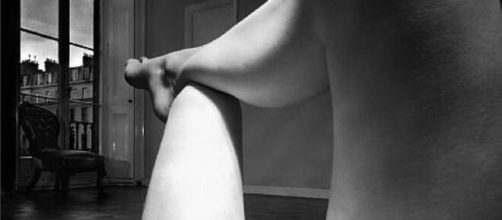Shadows. In themselves, they don’t say much. But in painting and photography, they can be weighted with meaning – even if whispered.
Stories found in the dark
When it comes to shadows that speak softly, I think of Prudence and Fortitude Overcoming Evil painted by Sebastian Conca. Deep darks in the figures’ swirling robes cause the cloth to appear bulkier, more cumbersome, intensifying the struggle to rise above evil.
But shadows that leap to the eye belong to Ansel Adams’ photograph "Moon and Half Dome" where inky darks crowd out the silvery light to possess the night.
These pitchy parts in Adams’ work lend his windless, cloudless scene solemnity. Then, as jagged darks run down the craggy mountainside, the scene turns sinister.
But when it comes to sinister, Bill Brandt’s photographs pop into mind. With abrupt changes from light to dark, his shadows look like slash marks. His current show of land, sea, and city scenes at Foam Fotografiemuseum Amsterdam is aptly titled "The Beauty and the Sinister."
While the hard-edged darks in Brandt’s scene photos look grim, they become positively ghastly when he aims his camera at women.
I’m thinking of a Brandt show in 1990 at the Ringling Museum – “Perspectives of Nudes” – that put in shade parts of women’s anatomy that severed both their heads and limbs.
His signature play of razor-sharp shadows struck me then as women-hating.
Brandt’s sooty darks don’t veil women’s bodies so much as cut them up into little pieces. By putting their heads, arms, and legs in dense shade, their body parts look amputated. Even Venus de Milo kept her head on.
In your dreams
Less demonic, and more dreamlike are the unlit parts of paintings by De Chirico. His use of long shadows cast from arcaded buildings in deserted squares lends all his work the silence of sleep.
And with the empty streets comes the look of isolation. De Chirico seems clued in to the sadness of modern life. He even names one of his works "Melancholy and Mystery of a Street." That’s the one picturing a small girl rolling a hoop down a vacant street of old-world-style buildings.
De Chirico’s exaggerated perspective – the kind you see in dreams, full of pseudo-classical architecture, also tells stories. But always, always shadows turn them into thrillers.
But wait, you don’t have to conjure up dreams to turn shadows into a narrative. A silhouette figure perches on a cliff in Rembrandt’s painting "The Mill" doesn’t stop talking. And as night descends, darks seep into the scene like an oil spill.
Those deepening darks at the close of day in "The Mill" impart sadness. The brooding feeling that comes over this painting makes it unforgettable.
That’s not just me talking. J.M.W. Turner wrote of The Mill’s “inestimable gloom.” And John Constable judged it “sufficient to form an epoch in the art.”
Of course, in any discussion of shadows, it would be art criticism malpractice to leave out Caravaggio. As in all his paintings, jarring shade makes his imagery hard to forget.
Let’s hear it for shadows as master storytellers.


